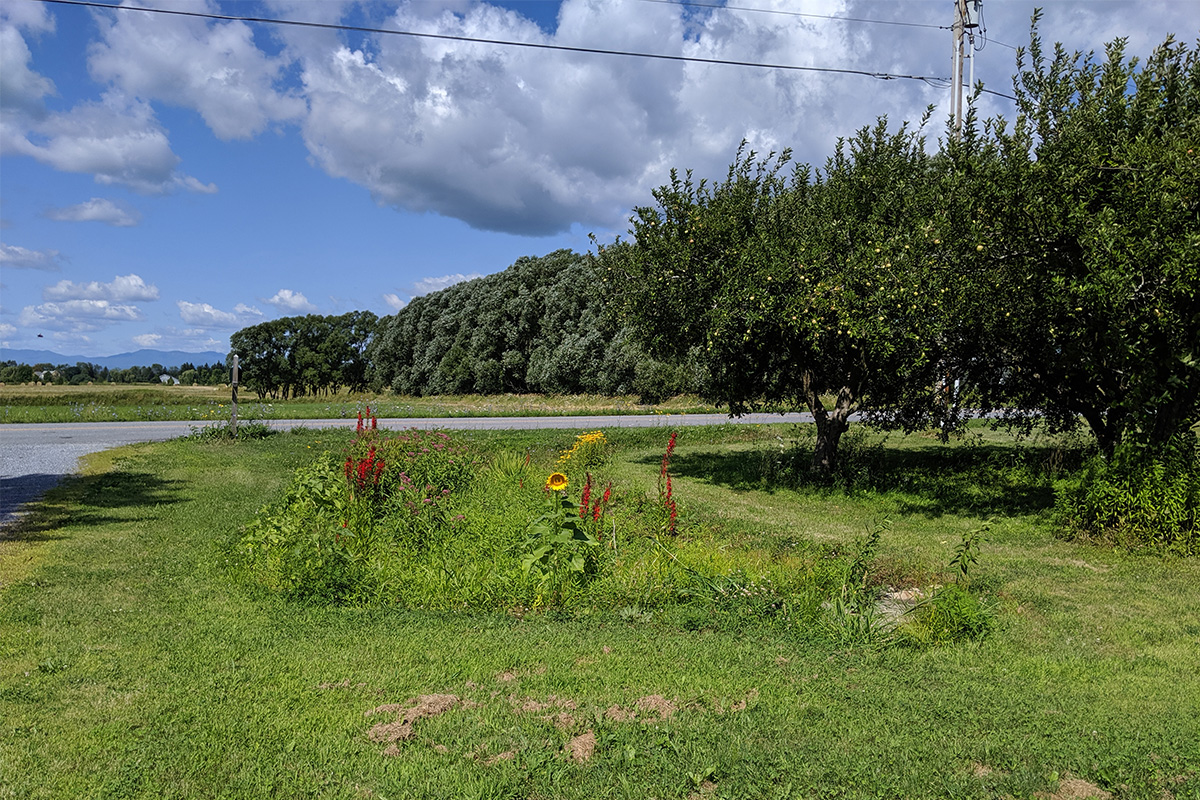How Can Residents of the Lake Champlain Basin Contribute to Water Quality and Stormwater Management?
Sep. 18th 2024Did you know that 85 percent of Vermont land is privately owned? In our disproportionately large watershed that is 19 times the size of the Lake Champlain itself, stormwater runoff and pollution from all parts of the watershed (about half of Vermont, and parts of upstate New York and Quebec) drain into the lake, impacting water quality. As large storm events become the new normal, private landowners hold much of the power in managing water quality. One of the best ways landowners can improve downstream water quality is to install green stormwater infrastructure, or GSI. GSI uses nature-based processes to soak up stormwater and clean it before it enters waterways.
The Lewis Creek Association just released a guide to stormwater management for residents. This manual, created as part of the Ahead of the Storm program, is a how-to approach to managing stormwater on properties of all sizes. It describes how to look at the land to help control runoff and identify what areas could be improved. This information helps guide the reader to potential solutions, and resources to help.
“Clean water is essential to residents of the Lake Champlain basin,” explains Kate Kelly from Lewis Creek Association. “As human activities continue to impact the watershed, residents play a crucial role in protecting Lake Champlain and its tributaries.”
The guide is only 23 pages (with pictures!) and is user-friendly for people at all stages of learning about stormwater management. Opening with the 3 S’s of stormwater management (slow it down, spread it out, and soak it in), the text gives the reader an idea of how stormwater moves across the land before getting into site-specific planning.
The following section outlines what to watch out for during storm events on your property – where is water pooling, or moving fast? Do you see any erosion? They suggest making a diagram, or map, of the land. In this map, sketch out the story of stormwater as accurately as possible—including both where the land is doing a good job of managing stormwater and where it could improve, as well as variations by season or event type.
After mapping the stormwater on your property, it’s time to take action! The guide walks the reader through various solutions to common problems, including DIY solutions and more complex strategies, including consideration for the larger storms we are seeing with climate change.
“This guide is meant to be accessible for anyone who wants to better manage stormwater,” said Kate Kelly. “While we are thinking about these practices in terms of water quality, installing green infrastructure also increases flood resilience, and can serve as habitat for pollinators and other native species.”
Are you ready to get started on your property? Download the manual now. If you have questions, reach out to Kate Kelly
 ecoNEWS VT
ecoNEWS VT